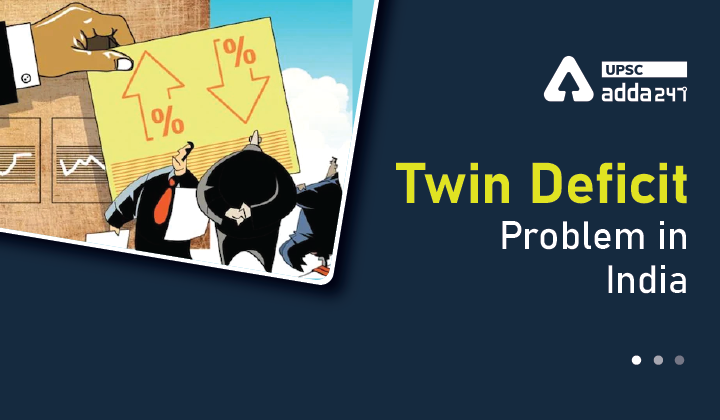Table of Contents
Twin deficit UPSC: Relevance
- GS 3: Indian Economy and issues relating to planning, mobilization, of resources, growth, development and employment.
Inflation in India: Context
- Ministry of Finance in its latest review has given an optimistic picture of the state of Indian economy.
Twin Deficit Problem in India: Key points
Resilient Indian economy
- Stagflation in India: Risk of stagflation in India is comparatively lower as compared to the world economy. While widespread stagflation is becoming a possibility in the world; Indian economy, due to its stabilization policies, is at low risk of stagflation.
- Momentum of Indian economy: The momentum of economic activities sustained in the first two months of the current financial year augurs well for India continuing to be the quickest growing economy among major countries in 2022-23.
- It is significant because economic growth outlook is likely to be affected by several factors owing to the trade disruptions, export bans and the resulting surge in global commodity prices —all of which will continue to stoke inflation.
Issues in Indian economy
- The report has highlighted two areas of concern for the Indian economy—fiscal deficit and the current account deficit. Both these deficits are collectively known as twin deficit.
- Fiscal deficit: Due to cuts in excise duties on diesel and petrol, government revenues has taken a significant hit. It has resulted in an upside risk to the budgeted level of gross fiscal deficit.
- Current Account Deficit: Costlier imports such as crude oil and other commodities will not only widen the CAD but also weaken the rupee against USD. A weaker rupee will, in turn, make future imports costlier. Besides, the interest rate increase by US could see money being pulled out of Indian economy that will further hurt rupee.
Back to basics
Fiscal deficit
- Fiscal Deficit is the difference between the total income of the government (total taxes and non-debt capital receipts) and its total expenditure.
- The government describes fiscal deficit of India as “the excess of total disbursements from the Consolidated Fund of India, excluding repayment of the debt, over total receipts into the Fund (excluding the debt receipts) during a financial year.
Current account deficit
- Current account surplus indicates that a country’s exports are more than its imports while current account deficit means a country’s imports are more than its exports.
- It is composed of following parts:
- Balance of Trade: It includes a country’s financial transactions while dealing with goods. So, balance of trade basically includes international transactions that involves sale/purchase of goods.
- Balance of Invisibles: It includes a country’s financial transactions while dealing with services. So, balance of invisible basically includes international transactions that involves sale/purchase of services.
- Transfer payment: Elements like donations, remittances are a component of transfer payment and hence are a part of current account.
Read current affairs for UPSC




 TSPSC Group 1 Question Paper 2024, Downl...
TSPSC Group 1 Question Paper 2024, Downl...
 TSPSC Group 1 Answer key 2024 Out, Downl...
TSPSC Group 1 Answer key 2024 Out, Downl...
 UPSC Prelims 2024 Question Paper, Downlo...
UPSC Prelims 2024 Question Paper, Downlo...





